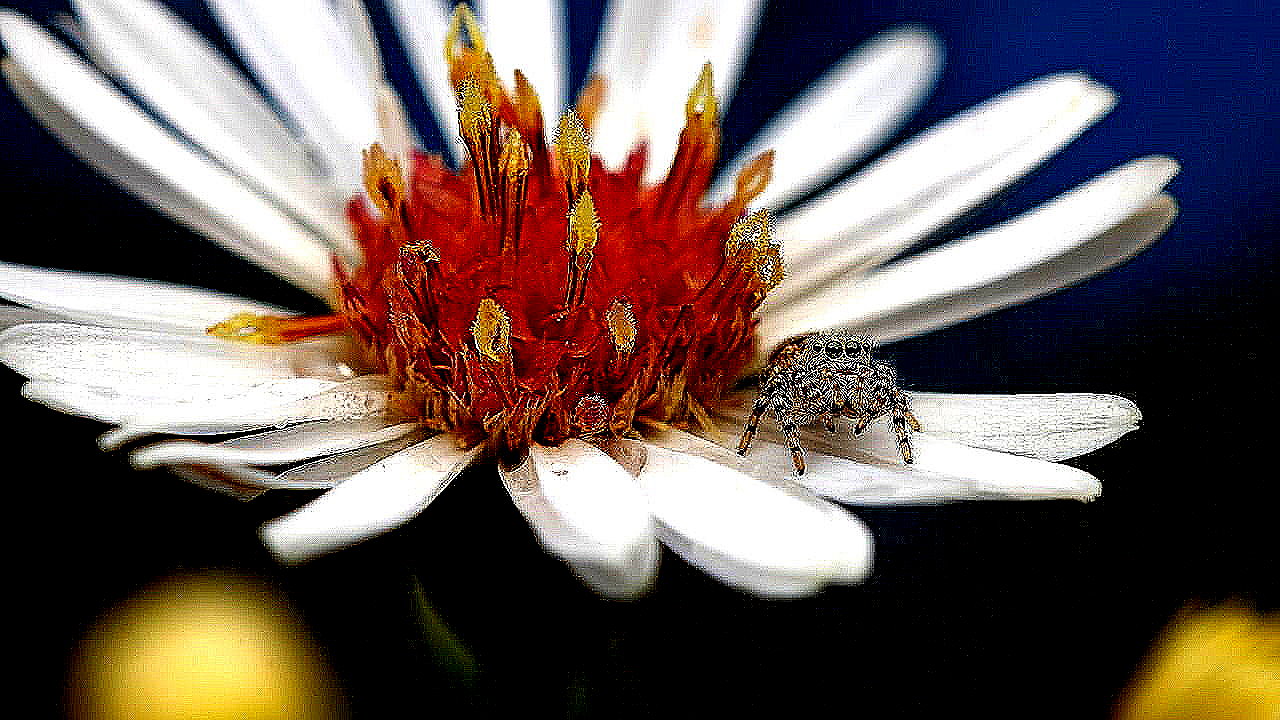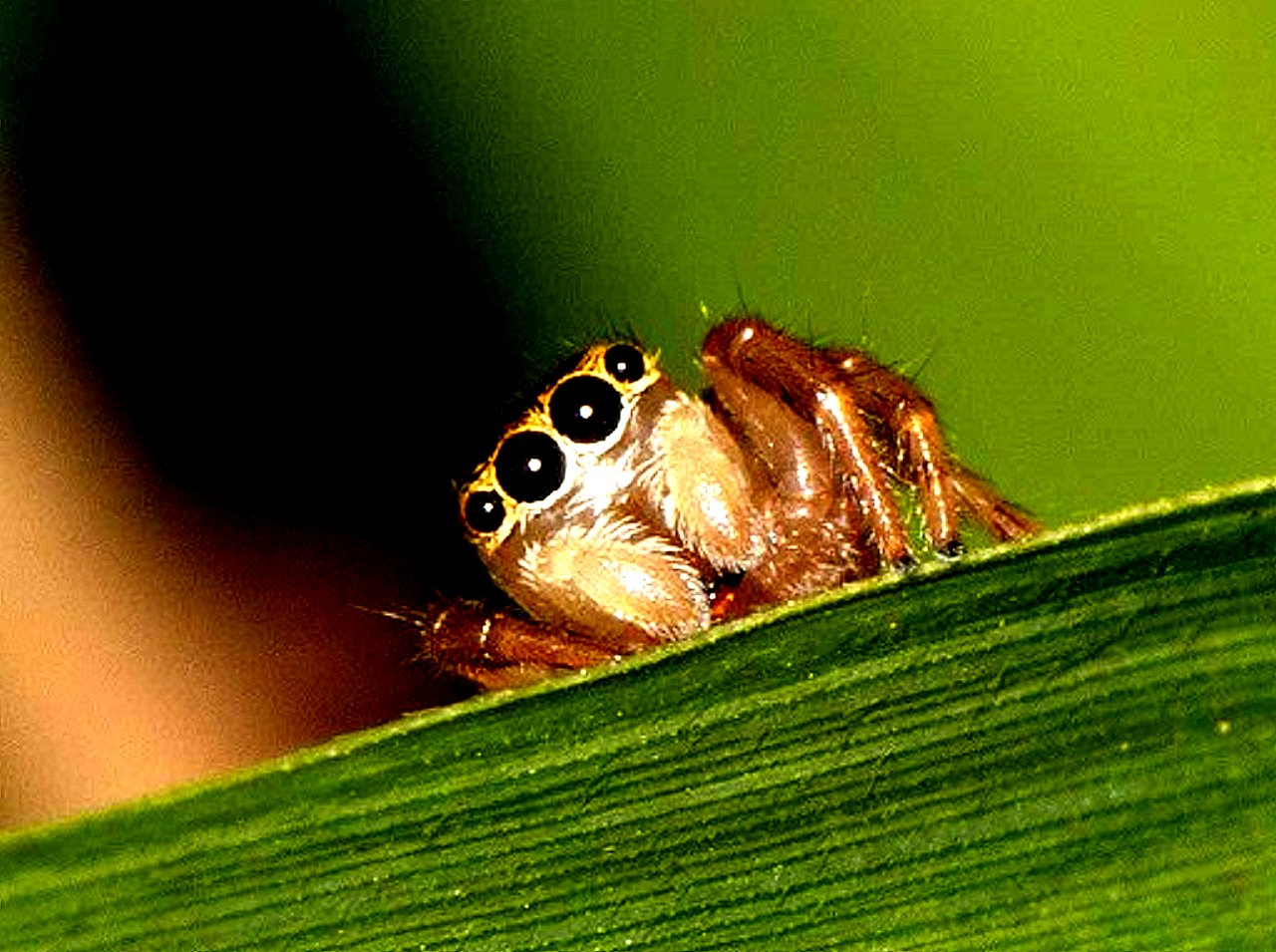Spiders are arachnids and are distinct from insects, though both groups are arthropods. Generally, spiders are objects of distaste and often inspire fear, particularly if one thinks that one is encountering a poisonous type, such as, a black widow, a red widow, a brown widow, a trapdoor, or brown recluse. Also worth noting are the Brazilian Wandering Spiders, a.k.a, Banana spiders. These belong to the genus Phoneutria and the species nigriventer, interestingly, has a venom which is being investigated by some researchers as a treatment for erectile disfunction. (Watch out Viagra! although keeping a box of Phoneutria handy is probably much less convenient to carry around in one's pocket than a small vial of pills.)
Many people have a visceral, reflexive response to spiders and I am reminded of the scene in the Woody Allen film “Annie Hall” where Annie calls him over at 3:00 am to kill a spider in her bathroom. After chastising her several times, he finally enters the bathroom with a rolled up magazine and then comes back out asking her for a broom saying: “There’s a spider in your bathroom the size of a Buick!” This kind of hyperbole is the other end of the spectrum from the telling of how big the fish was that got away where size is a virtue.
In Australia, there is another feared arachnid, namely the Sydney funnel spider of the genus, Atrax. These are brown, substantial spiders who create a funnel-shaped web and then they sit at the bottom and wait for anything to contact the web, whereupon they rush to the mouth hoping for a meal. Their bites are toxic and human deaths have been reported.
Tarantulas are also often objects of disgust and revulsion, in part, because of their size, in addition to their appearance. They tend to strike many as not only ugly, but alien and threatening. However, there are many other creatures in nature that are repellent. Consider the following: hyenas, warthogs, starnose moles, proboscis monkeys, the Marabou stork, the horseshoe bat, and the blobfish to mention a few. You can find photos of these by doing searches on Google.
At this point, however, I want to pivot 180 degrees and suggest to you that there are some fascinating and quite lovely spiders which we largely ignore. Three notable examples are the dancing peacock spiders, the jumping spiders, crab spiders and the intriguing diving bell spider.
Let’s begin with the dancing peacock spiders. They use the dance as a survival mechanism as it seems that a large number of female spiders are not given to long term romantic commitments. I’ll show you three images from Google and then attach a brief video of the dance.
Now, you will notice that not only are they colorful, but also very friendly, since each one is waving at us.



The closely related jumping spiders are also quite wonderful. These don’t have the bright colors, but they make up for it by being quite cute. As you have doubtless guessed by now, these spiders are all very small and quite easy to overlook. First, I’ll show you one sitting on a flower and then one which is peering over the edge of a blade of grass, giving us a look filled with curiosity and caution. Here you see four of its eyes and it has four more as well. What an interesting view it must have of the world! That makes me think of how many organisms we have on our little planet who perceive the world in ways that we can only begin to imagine.


The
process of evolution involves seemingly endless experimentation and
another fascinating little creature is the “diving bell”
spider. These little marvels mastered survival underwater long
before we even thought of such an idea.
I’ll show you three
examples.



Finally, let’s take a brief look at mites and ticks. Mites are interesting and some are quite beneficial; ticks and many mites are parasitic and in my view, overall quite unnecessary for the planet along with mosquitos. I would exempt those mites that are beneficial. First, a look at some not very nice mites. We’ll begin with dust mites, which, even in the cleanest households, are very likely to be found and can occur in enormous numbers. I’ll show you a closeup of one and then a group.


You might vehemently insist that you don’t have such micro-monsters in your domicile, but a little careful collecting will probably reveal some.
Another tiny villain is the spider mite which can utterly ruin some quite lovely plants that you have spent much time and effort cultivating for an indoor display. First, a closeup and then a view of a web which they form. Note many tiny mites housed in the web.


Now, here’s a candidate to produce the creeps; it’s a common mite that lives in the follicles of human skin, including the eyelashes. It can also embed in skin producing a mild rash, but is rarely serious and is fairly easily treatable. Nonetheless, the appearance is certainly off-putting. I’ll show you two views.


And to round things out a bit, a rather nice little “Red Velvet” mite.

Another group of rather splendid mites are the water mites which are very common in freshwater and are great fun to observe as they rapidly swim about looking for food. They have a wide variety of pattern and color ranging from bright red, to cream, to green and are adorned with various “spots”. I’ll show you three examples.



And, lastly, the terrible ticks. These are really repulsive critters and can cause a wide variety of diseases in humans, pets, and other animals. Lyme disease and Rocky Mountain Spotted Fever are two of the best known. The latter can prove fatal if untreated, but responds well to antibiotics. Anyone camping or hiking in areas likely to have ticks, should check for these little nasties regularly. They start out as very tiny and become rather more visible as they bloat from a blood meal from the host. Here is an image to give you an idea of the original size and why they are so difficult to detect at this early stage.

Next, two closeups to give you a better idea of what they look like.


To heighten ones disgust, an image showing the enormous number of eggs which a tick can produce. It is estimated that a single tick can produce over 2,000 eggs in one season.

I hope that this little tour was informative without being too alienating.